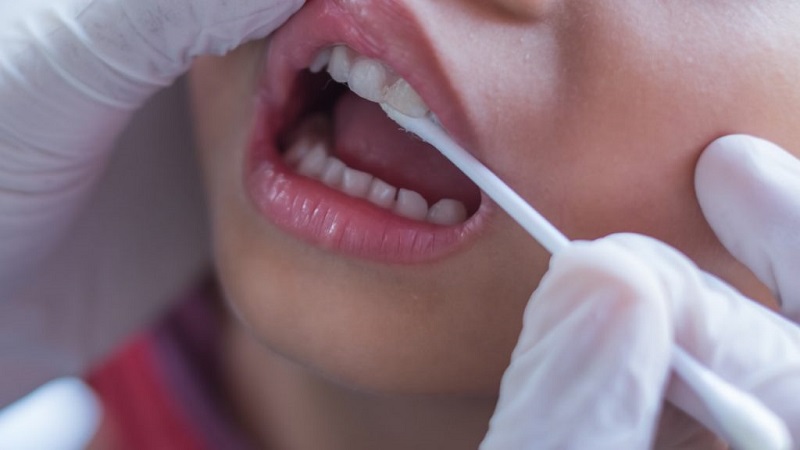What are the causes and symptoms of dental fluorosis?
Fluorosis is a cosmetic condition that affects the teeth. This condition is caused by overexposure to fluoride during the first eight years of life. That is, when most of the permanent teeth are forming. We intend to continue today's article on Dr. Hossein Borjian's website The best cosmetic dentist in Isfahan Let's examine the causes and symptoms of dental fluorosis.
After the permanent teeth grow in, the teeth of people affected by fluorosis may slowly change color.. For example, there may be white marks that only dentists can detect. In more severe cases, the teeth may have the following symptoms:
- Yellow to dark brown spots
- Surface irregularities
- Holes that are very visible.
Definition of fluoride
Fluoride is a mineral in your bones and teeth. It is also found naturally in the following ingredients:
- Water
- Soil
- plants
- stones
- Air
Suggested content : Treatment methods after dental implant loosening
Fluoride is commonly used in dentistry to strengthen tooth enamel. Enamel is the outer layer of your teeth. Fluoride helps prevent tooth decay. It is also added to public water supplies in small amounts in the United States and many other countries. This process is called water fluorination.
Uses of fluoride
In the field of human health, fluoride is mainly for improvement tooth health is used. Sometimes you can find it at your local power supply and many products below:
- Toothpaste
- mouthwash
- Supplements
Other uses of fluoride
- In medical imaging scans, such as a PET scan
- As a cleaning agent
- in pesticides
- To make Teflon, steel and aluminum products
The prevalence of fluorosis
Fluorosis for the first time at the beginning of the century 20 Was considered. Researchers were surprised by the high prevalence of brown stains on the teeth of the native residents of Colorado Springs. These stains were caused by high levels of fluoride in the local water supply. It was fluoride that was naturally present in groundwater. People with these stains also had an unusually high resistance to dental cavities. This sparked a movement to introduce fluoride into public water supplies at a level that would prevent cavities but not cause fluorosis..
Fluorosis in almost one in four Americans 6 until the 49 It affects one person every year. Its prevalence in ages 12 until the 15 The age is more. The vast majority of cases are mild, and only about 2% are considered moderate. Less than 1% are also severe. But researchers have also observed that since the middle of the decade 1980 Prevalence of fluorosis in children 12 until the 15 has increased annually.
Although fluorosis is not a disease, its effects are psychologically distressing and difficult to treat. Parents' vigilance can play an important role in preventing fluorosis.
Causes of fluorosis
One of the main causes of fluorosis is the improper use of dental products containing fluoride, such as toothpaste and mouthwash. Sometimes, children enjoy the taste of fluoride toothpaste so much that they swallow it instead of spitting it out..
But there are other reasons for fluorosis. For example, taking too much fluoride supplements in early childhood can cause it.
The standard level of fluoride in drinking water
Fluoride is naturally present in water. Normal levels of fluoride higher than recommended for drinking water may increase the risk of developing severe fluorosis. In communities where the natural level of fluoride in their drinking water exceeds 2 parts per million, it is recommended to get their drinking water from other sources.
US Department of Health and Human Services in January 2011 Worried that children might be getting too much fluoride, it lowered the recommended amount of fluoride in drinking water..
In Iran and in most of its cities, the amount of fluoride in drinking water is lower than the standard amount.
Symptoms of dental fluorosis
Symptoms of fluorosis range from tiny white spots or streaks that may not be noticeable, to dark brown spots and cracked, rough enamel that is difficult to clean.. Affected teeth Fluorosis They are smooth and shiny. They should also be pale creamy white.
Dr. Hossein Borjian's Instagram page
If you notice that your child's teeth have streaks or white spots, call your dentist.
Since the 1930s, dentists have evaluated the severity of fluorosis using the following categories:
- questionable: The enamel has little changes, from a few spots to sometimes white spots.
- very mild: Small papery opaque areas are scattered over less than 25% of the tooth surface.
- mild: The white opaque areas on the surface are more extensive but still affect less than 50% of the surface.
- intermediate: White opaque areas affect more than 50% of the enamel surface.
- intense: All enamel surfaces are affected. Teeth also have cavities that may be discrete or contiguous.
tip :
- The scientific accuracy of the above published material should be confirmed by the patient's personal consultation with Dr. Borjian.
- This article is managed and published by the site admin.
Ways of communication with the specialized dental center of Najm




